Engraved Walther PP: Buchenwald Concentration Camp Gun UPDATE
Update and Thank you Richard!
Hey guys, today I'm really happy to give you an update on one of our previous videos. Now some of you may recognize this gun, I call it the Buchenwald Gun. I did a video on this about two years ago, which was one of our first videos. And it actually is a very popular video because we're approaching almost 600,000 views and I'm sure we'll hit a million. But I have an update primarily due to the work of Richard in Virginia.
Courtesy of Richard
Now, Richard in Virginia provided an update in a couple of ways, but he also did a lot of research for me on this gun. I want to clarify, I did not do this research. It took tons of hours to pull all this information together. And some of you from time to time will send me a serial number of your gun, whether it's a Walther or a Luger and you say, please tell me all about this gun and who used to own it. I don't know. I can't find it, the records are gone, the only thing I can do is probably tell you the date it was made. But Richard was determined to find out more about this gun that I now want to share with you on three important updates. So I'm going to give you about a four-minute review of this previous video and then I will stop it in order to do the updates one at a time. And there are three.
A Lead Up to a Great Story
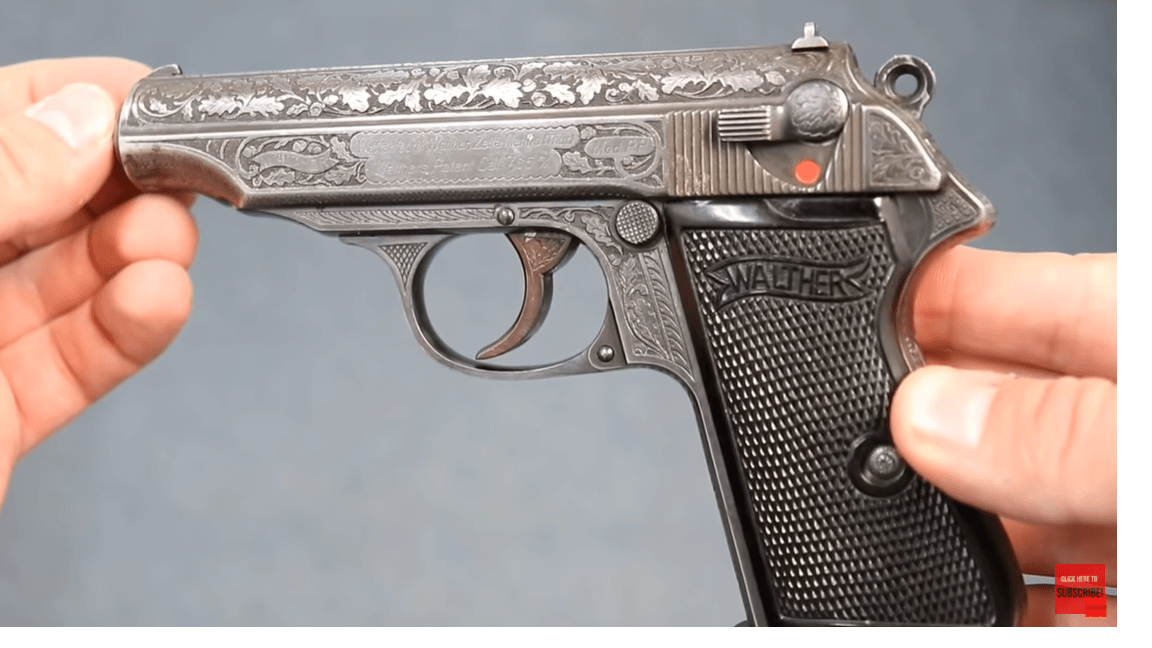
This is an engraved Walther PP from 1937. And it comes in this Akah shoulder holster. Now I bought this back in 2004 from a dealer up in Maine. I then sold it to a friend of mine down in Georgia, Richard Hunter. Richard Hunter at the time was working as a private investigator for a law firm and so he had access to files that I didn't have access to. And long story short, he was able to track down 10 Ted Blaisdell and get the following story.
It's true... It is from a dead SS Officer

Now I have to start off by saying we if you've watched other videos, we've told you the number one story we hear from anybody who captures a gun is I took this from a dead SS officer. And we always laugh about that because you know, when dad or grandpa tells a story, it always gets embellished. And I know if I brought something back, it would have been from a dead SS officer, not from a cook or a clerk. It had to be a dead SS officer. So this actually came from a dead SS officer. And again, it's a little bit sobering, so I don't want to make light of the story because it was taken out of Buchenwald.
Caught the story in the story in the nick of time
So my friend Richard Hunter called Ted and he actually got his home health care worker, because Ted was in his final days of his life. So it was very timely that he called. He bought this in 2005 and it was in February of 2005 that he talked to Ted, and then Ted passed away within weeks. So I'm really glad that he was able to track down this story because this story deserves to be told.
Who was Ted?
So Ted was a pilot and he worked for the Army Air Corps. He actually transported dignitaries in those little small piper planes that the US Army did. They did a lot of observation. He said he transported Eisenhower a few times. He was stationed in Paris and he would take people back and forth for different meetings and opportunities. In this case, it was two congressmen. They'd heard about the death camp. So it was right at the end of the war, 1945. Two congressmen wanted to go and visit Buchenwald. So they came to Paris and Ted, who was at the time he was being a Major at the time, later a Colonel. He was in charge so he could have assigned somebody else but he said I wanted to do this because it was a great photo opportunity to be with a couple Congressman, they went to Buchenwald.
You would never believe this!
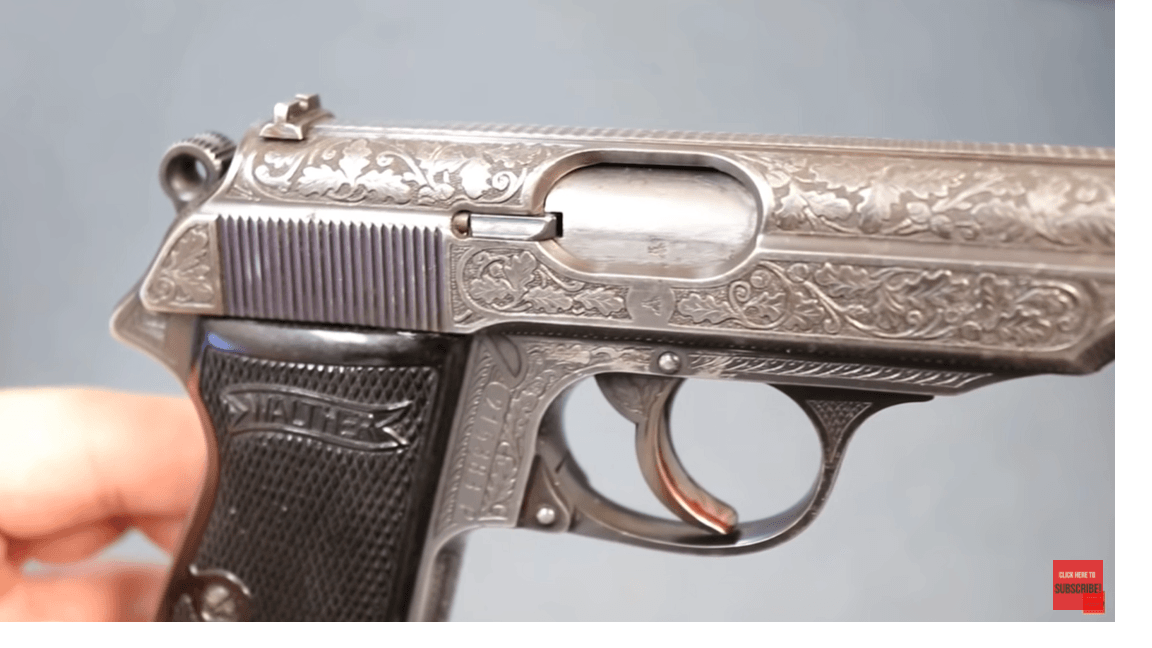
One of the things he saw was an SS officer dead, draped over a fence. They took the body down and when he took the body down, he said around his neck was this gun in the shoulder holster. He then brought it back from the war. It is factory engraved by the way. We know that from the serial number. That serial number we've talked before that they came in solid blocks.
Update Number 1

Timeout Okay, interruption number one. Richard actually bought the consecutive number to this gun. I got an engraved PP in and it's in the 215 range, which we already know from previous videos and from research that that is a factory engraved gun. So when it came in, I put it up for sale. Richard was able to figure out hey, that one is consecutive number to the one that you have, that we call the Buchenwald Gun. I apologize for the poor quality of the picture, but we really didn't want to ship the guns back and forth. So we do have a picture of the two guns and you can see they're consecutively numbered.
Many thanks to Richard!
So again, thank you Richard, for your work on that. And I'm glad you got the consecutive numbered factory engraved gun.
That serial number proves a point
And it also proves another theory I did a video on Waffen proof guns. How do we know it went to the Army or how do we know it went to the military? We talked about, a lot of the soldiers would do private purchase guns. This one is not Waffen proofed, the military never would have issued an engraved gun. So this was a private purchase gun. A little forensic logic would tell me that it probably came from a well to do family because these were expensive and people didn't have money for things like this. Oftentimes, people would buy a graduation gift when you graduated from your SS school. I've seen documentation that family would present it to their son upon graduation. We don't know the whole story of this, but it's went to an SS officer who was assigned to Buchenwald.
Update Number 2
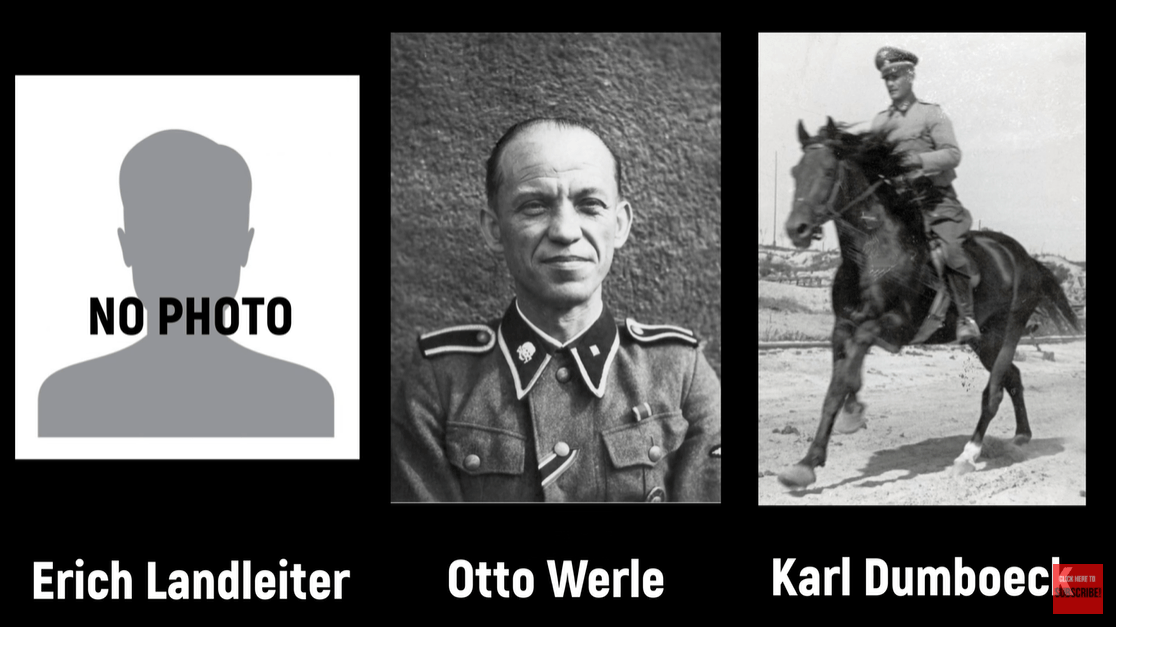
Okay, interruption number two, and actually, we're approaching the end of that video. But Richard was able to track down three potential candidates in terms of who actually owned this gun. And the way he was able to do that is he tracked down three people who died the day of liberation, the liberation of the camp. Now this was about April 11 through April 14. Elements of the US Army were coming in. And of course, we've all seen videos of what they found when they first walked in the gates. And by the way, the death certificates are for April 14. So they were alive when the Americans came in. And the best we can tell, and eye witness testimony say that the guards that were killed, were not killed by enemy soldiers, meaning the US Army, but in fact were killed by the prisoners. And so we assumed that that's what happened with these three guards who were killed soon after the Americans liberated the camp.
Candidate #1
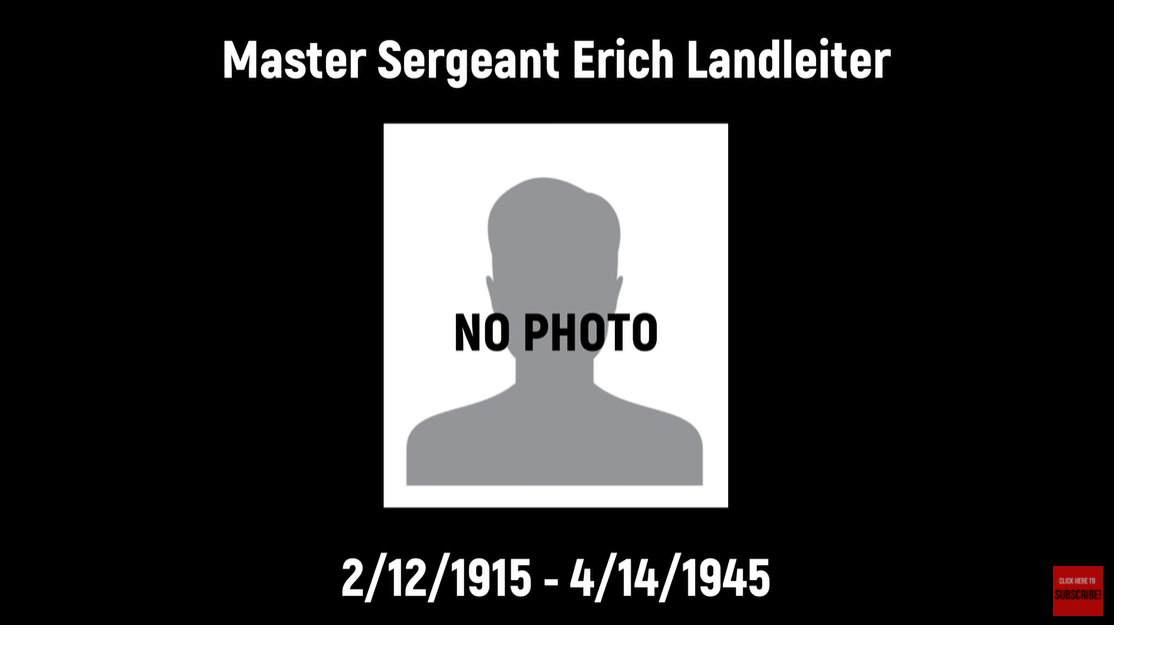
And here are the names of those three guards. First is Eric Landleiter. Now he was about 30 years old at the time of death. And again, this is April of 1945. He was a Master Sergeant and we don't really know a whole lot about his duties, and we did not have a picture of him.
Candidate #2
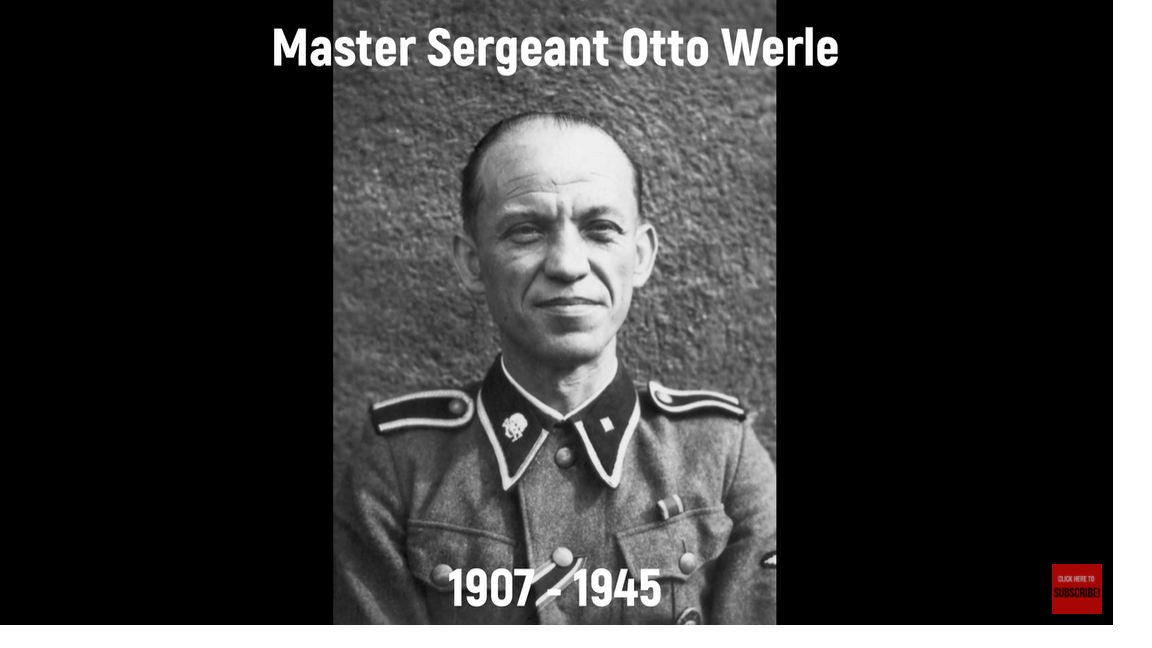
The second guy is Otto Werle, and he also died in April of 1945. And he would have been about 37. He was also a Master Sergeant, and we don't know a lot about his duties but we do have a picture of him right here. Now, I don't mean to be mean, please forgive me. But I really think he looks like Barney Fife. And I have to tell you that Andy of Mayberry is one of my favorite old shows to go back and watch.
Third Candidate
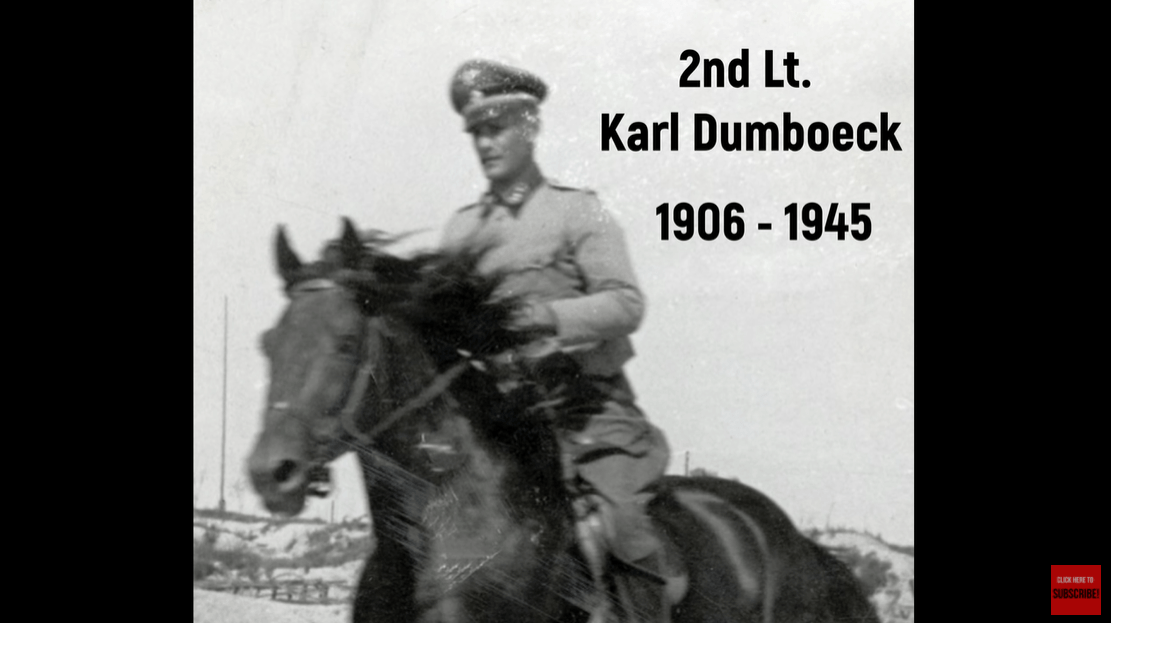
But let's move on to the third candidate. And that is Karl Dumboeck. Now Karl is the only one of the three that is an Officer, he is a Lieutenant and we have some evidence that he maybe came from a more well to do family. And why was he targeted? Well intelligence report indicate that he personally murdered at least 40 prisoners. So he is our leading candidate. And our theory would be not only that they died upon the date of liberation, but also because it's an engraved gun, it had to be a private purchase by an officer probably. And I know from collecting guns, that a lot of these engraved guns were private purchases by the families of officers. And basically, when they graduated or when they were promoted, the family would buy them an engraved Walther. Now, this was an expensive proposition, it cost a couple thousand to get a private purchase gun like this. So we assume it would not be one of the Master Sergeants, but more likely one of the officers. And so that's why Karl is our best candidate.
Our Research points to Karl

Now I want to clarify again, Richard when he did this research, we both said there is no way we know for sure who carried this gun. It doesn't even have to be one of these three but this is the research we found and our best candidate is Karl Dumboeck.
Let's clarify a bit
Also point of clarification, I'm going to show you a photo album from the Camp Commandant. Buchenwald was a very large camp and there is a large staff. Here we see the staff, when they were being captured they were being paraded through on camera, and you get a glimpse of the number of men on staff as well as an equal number of women who worked the camp. We don't have information on all of these. In fact, the first guy Eric, I said, I have no pictures or record on him. But let's go through the commandant private photo album.
A Private Photo Album
So this is available online. And again, Richard found this is Karl Koch, and I'm going to say Coke because it's easier for me. I'll show you here, in German is probably Koch, but I'm gonna say Coke, because it's just easier for me. So he's the camp Commandant and you can see he was also killed in 45. But we know it was not his gun because he was executed by the allies. So this you can see the quality of camera that he has and he kept a photo album. I'm going to just page through because there's going to be some new information for a lot of us.
Look at these ages
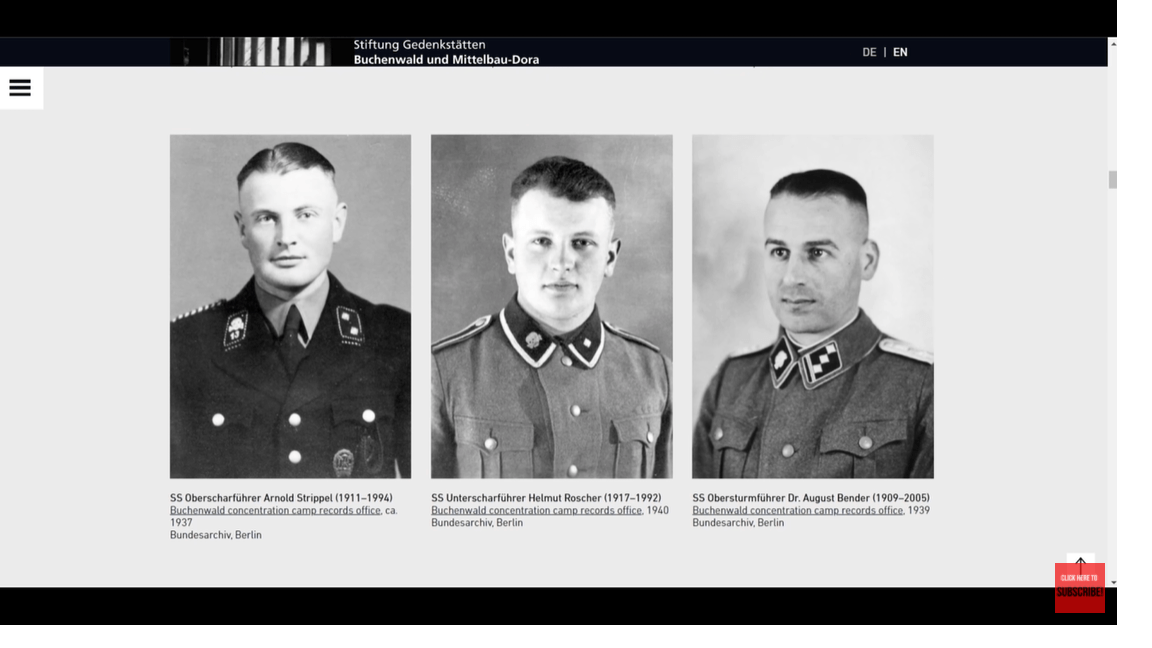
One of the things that surprised me about this is how many of these SS officers actually lived to a ripe old age, they survived the war. You see 64, 61; there's our other candidate Otto, also known as Barney. He died in '45, but we see 65, 98. I just assumed that most of these guys were executed, but in fact, they were not. You can see dates of death, he survived the war but died in '48. Here's some more guys, you can see lived into their 90s, 2005. It says doctor, but that doesn't mean he was a medical doctor. Three more guards or officers, again, all dying in the 80s. Here's a couple of the women. We saw the women parading by so we know there are a lot more. She lived to 1988 and here's one that lived to 2005. A picture with the kids playing in the snow. Life at the camp, I just page down and you can see what it was like. You see they're making a snowman. Just again, all very surprising to me. Things that I didn't know; we know about sporting events.
Just look at these photos - Surprising!
This is one of the guys on leave, he went into the town of Weimar which was the local town and that's where they would hang out when they were on leave or if they wanted to go out and get dinner and a beer. This is one of his pictures that you see the train arriving with the new detainees. And they're lined up to quote-unquote, air quote, welcome them. Here's a photo that surprised me. Because it's a funeral for SS officers in what the caption says is this was an Allied Air Raid in August of '44. Evidently, they bombed the camp and hit the officers quarters and killed a bunch of the SS guys in August of '44. I didn't even know that happened. Again, you see officers about their duties at the camp. And here's one, what is that? What do you see? I think that's a foosball table right there and they were playing foosball. And there's a reindeer, it looks like they put on some kind of a camp talent show for the guards to keep the officer morale up.
Here is our #1 Candidate again
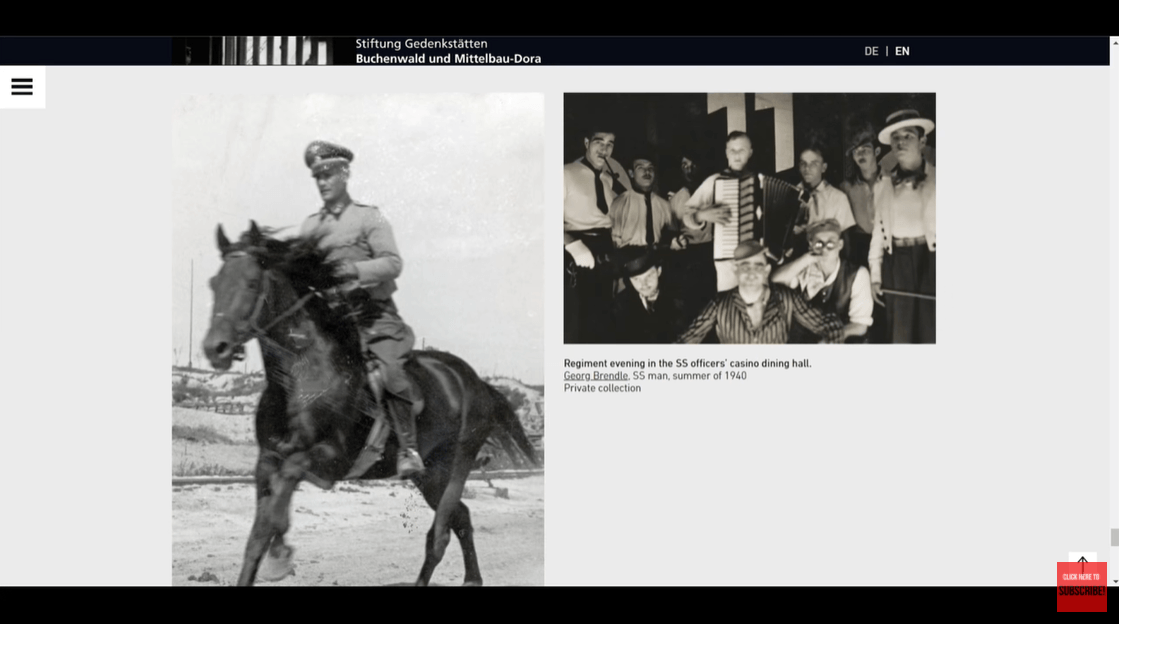
And this is our leading candidate. You'll see here, this is Karl Dumboeck and he's horseback riding. Now a reason I want to go back, he does have a holster. I would guess that he didn't normally carry his engraved presentation gun. Again, family gift, he probably kept it with him in his quarters. You can see by the way that he's riding that horse that he has had equine training. He looks a little more aristocratic than the other two candidates, although we didn't see the first one, the Master Sergeant versus a Second Lieutenant. And just by the way, he's riding that horse, he's my favorite candidate to be the owner of the gun. Now the gun of course was found on him after he died. And that I would think is because he was fleeing the camp. And he was killed by the prisoners, by the inmates and he had the gun on him at the time.
Third Update
So the third update is one that I can get all jazzed up about but I'll try to stay calm. But when we did the video I got a lot of comments immediately and continue to get a lot of comments that basically say the whole story is total BS. That Blaisdell just made this all up. There's no way that there were still dead bodies when -- he brought Eisenhower out a couple of times. He mentioned that he brought out congressmen on a couple occasions and he said in one of those trips, he found the gun. Now I can understand that over the years your memories are faded. I don't remember exactly which trip and who was in my plane. But people wrote and said the whole story is total BS. The dead bodies were all removed by the time the congressman got there. And actually, when I gave Richard that feedback, he found this study.
A Master's Thesis in Support of Ted's Story
This is actually from 2012 but it's a master's thesis from Benjamin Lindsey, University of Vermont. He documents what happens when military dignitaries, politicians and the news media came through Buchenwald. So just to go through the timeline, we see this first picture Eisenhower and Omar Bradley; and you can distinctly make out General George Patton. They came through the camps sometime between the 14th and about the 16th or 17th. He was ferried back and forth by people like Ted Blaisdell. Ted knows that he brought them into the camp but other people also made runs back and forth. And we can see the charred bodies. One quote that I heard about General Patton was Eisenhower said Patton wouldn't even take a drink of water for fear that he would throw up. And that was quoting Eisenhower. Now, right after that, we see here the actual message, and again, this is from the research that was done.
Top Secret
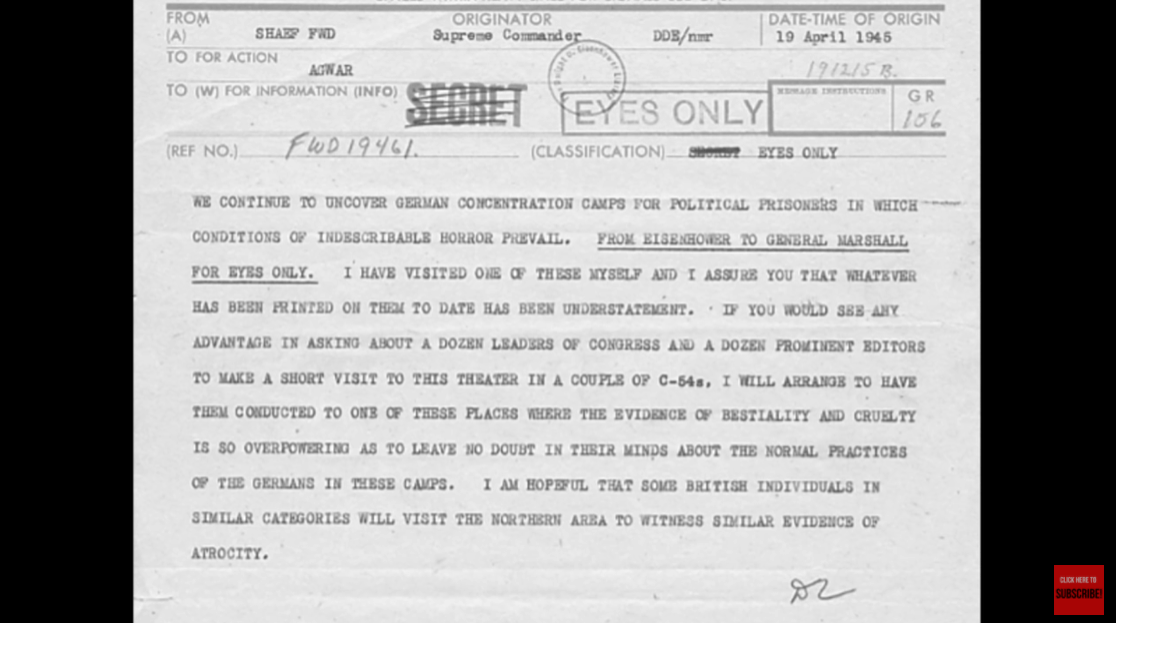
On April 19th Eisenhower wrote this note to general Marshall and said for your eyes only, so it was top secret. He writes, we continue to uncover German concentration camps. And there are several of them. And he says that they were indescribably horrible. I have visited one of these myself. And I assure you that whatever has been printed on them to date has been an understatement. If you see any advantage in asking about a dozen leaders of Congress and a dozen prominent editors to make a short visit to this theater in a couple of and that's transport planes, I will arrange to have them conducted to one of these places where the evidence of bestiality and cruelty is so overpowering as to leave no doubt in their minds about the normal practices of the Germans in these camps. He says I'm also hopeful the British can do the same thing. And they did because after the Americans were there, the British came through. And all of that happened in the middle into the end of April. He actually has a list of people who visited. These are the congressmen, Senators, and then the other attendants, military officers and the press. We also have a copy of the exact itinerary. They left Washington DC on the 22nd. They flew into Paris; from Paris, they were shuttled in smaller planes to different camps. And they went back to Washington DC on or about May 4. Actually they had an open day in Paris. So they visited Paris, and then they went back to Washington on May 7th.
More verification?
So you can see that the congressmen were there. This is actually a map of they came into Paris, that's where Ted was stationed in Paris. And then they took all these different flights with the congressmen and the dignitaries in order to show them the camps. So that basically verifies Ted's story of what he did, in taking these dignitaries to the camps.
More Pictures from the Album
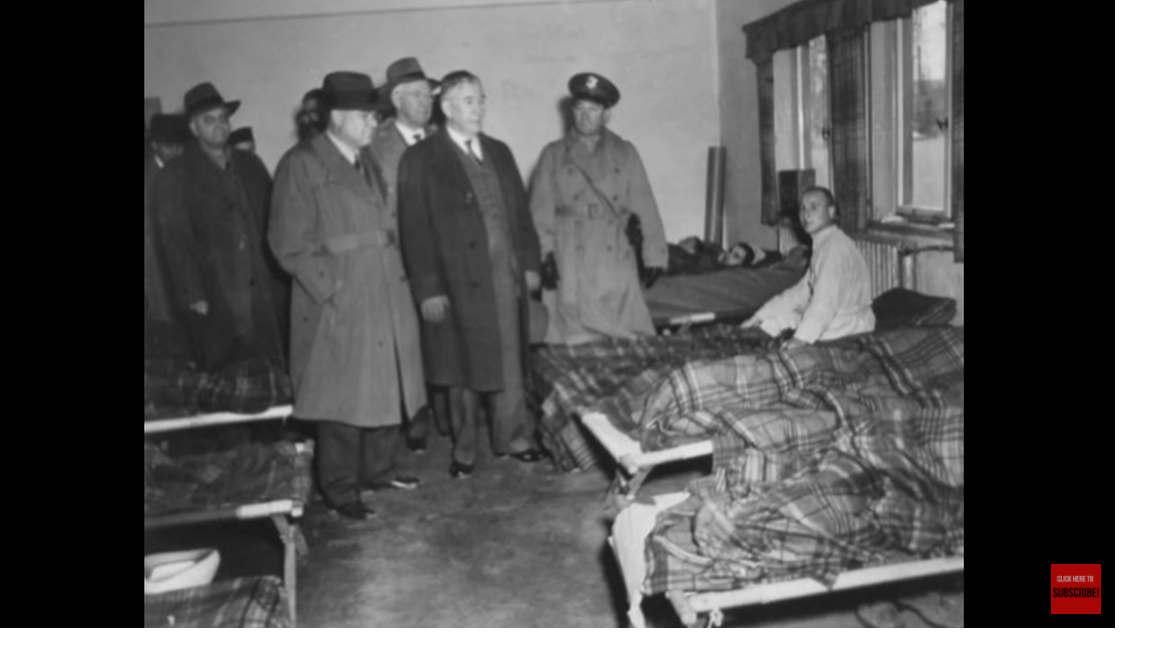
This first picture, this is them coming off the transport plane in Paris. They actually stayed at the Ritz that night. Also in Paris, you see Dwight D. Eisenhower, giving them a brief briefing, basically saying, here's what you're going to see tomorrow, and get ready.
Then they arrive. And you can see the dignitaries again, it's politicians, congressmen, but also writers from the various newspapers and photographers. Of course, they did not clean up all the dead bodies by then; the dead bodies were still there. In fact, they asked that everything be left the same in order to preserve the history. This is actually senator Barkley who was there observing the pile of dead bodies. They also visited the hospital where many remained in treatment. And there's just lots of pictures that you can go through. Most of you have seen many of these pictures. But clearly, the camp was still not cleaned up. And I have more information that in a minute.
Come on in and shut the door
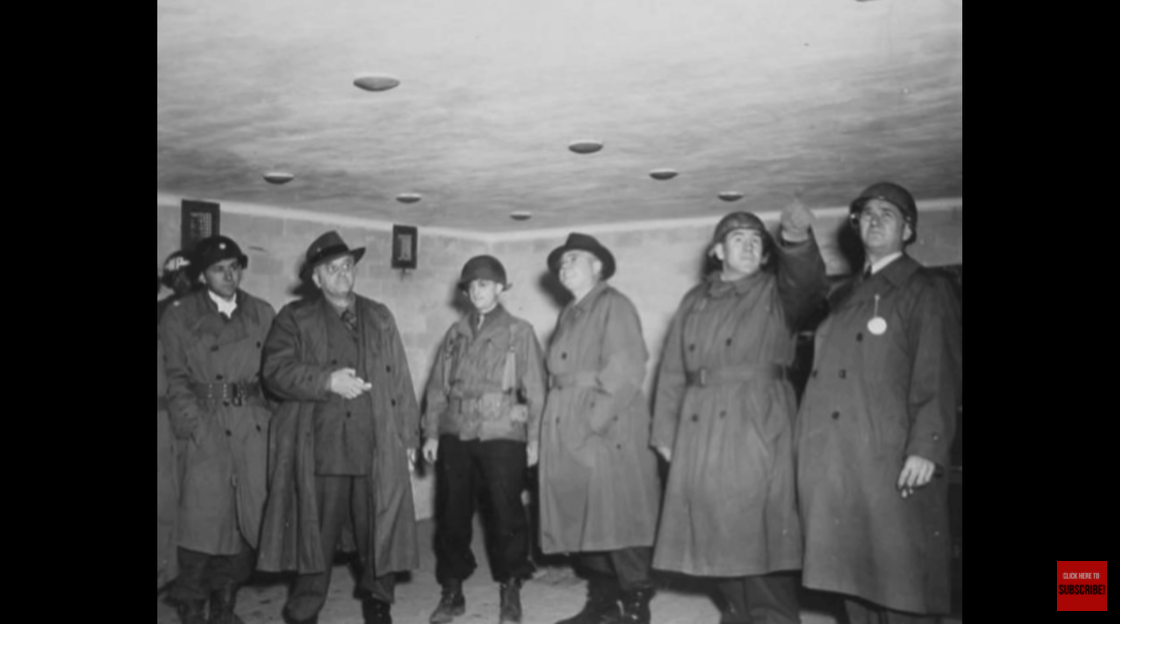
But this picture in particular, they actually are in the gas chamber, and I just have to tell you, if they said come on in and shut the door, I don't think I could do it. I'm a little bit claustrophobic, but I don't think I could go into the gas chamber and have them close the door behind me. It would just completely freaked me out.
Feel free to do more research
So again, most of you have seen these pictures. But very clearly, the camp was not cleaned up when Eisenhower, Patton, Omar Bradley, and a bunch of congressmen came through. So a lot of these videos are actually hard to watch. But on the other hand, what I find is, when I put them on, I almost can't look away. Obviously, if you want to learn more about this, just go to YouTube and do a search under Liberation of Buchenwald and you will see tons and tons of videos. The British did a very good job of documenting as well as American and again, every major newspaper and news outlet, went through and filmed the camps, not just Buchenwald but there another 20 that were filmed.
The Citizens of Weimar were overwhelmed
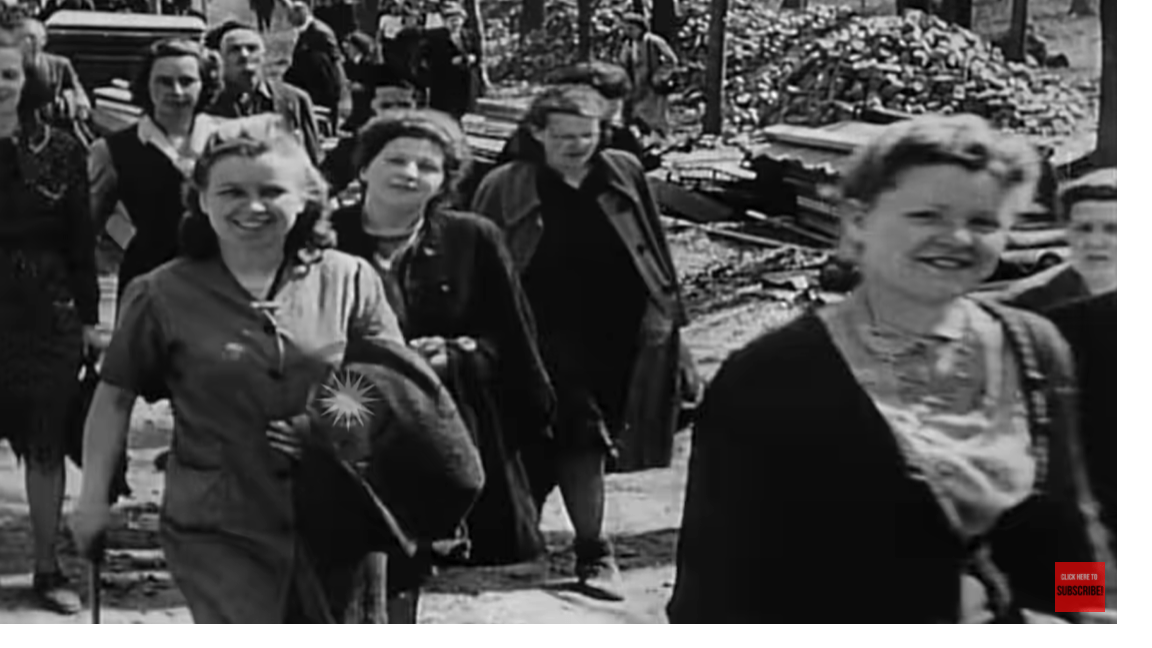
One of the ones that impacted me is after the politicians all left, they actually brought the German citizens of Weimar, the city of Weimar, they actually walked it was in within walking distance. I'm not sure exactly how many miles but it was outside of the town. You can see them walking in and they're all smiling and laughing and they think they're taking a stroll in the park. But then after they saw the sights of the camp, you see them coming out. Women have fainted people are in tears. People are visibly upset. That tells me they knew that there was a work camp but they didn't know the level of extermination and horror that was taking place. At least that's my opinion. I think just like the American army, they knew that those camps were there but they were surprised at the level of murder and brutality that took place.
Cleanup took some time
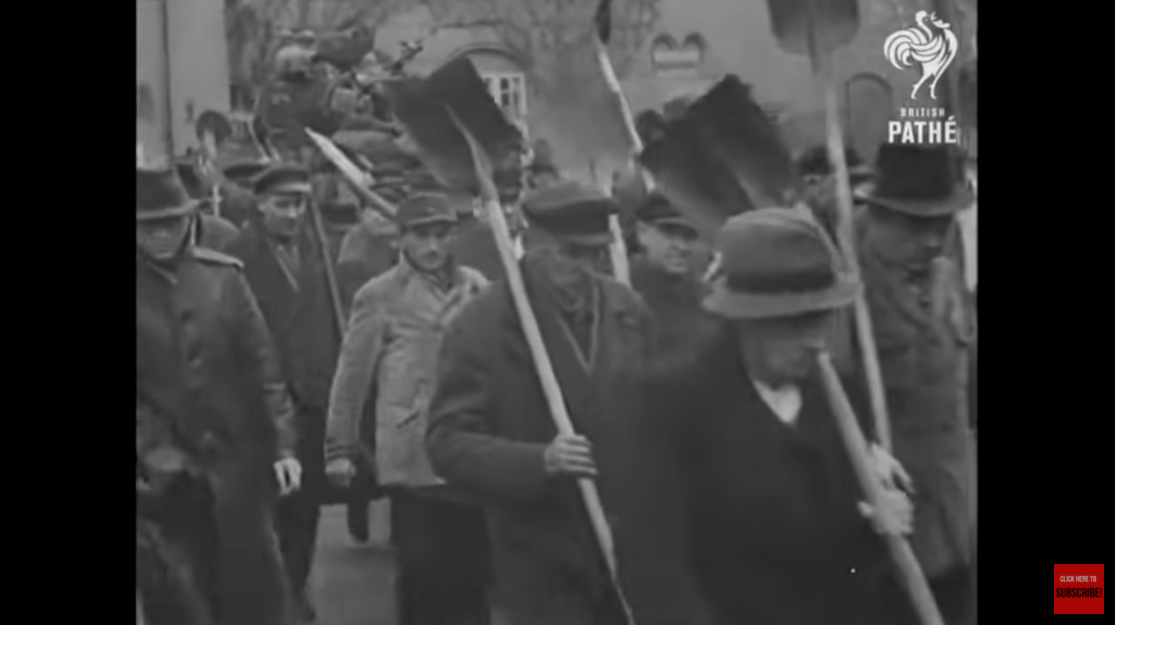
Finally, by the end of May, so again, this all was discovered early April, they started cleaning up the bodies in mid-May, but not everybody was buried until records say the end of May. Civilians and some of the soldiers and SS officers were put in charge of burying the bodies and in some cases, digging up bodies that were just thrown in the pits and then giving them a more decent burial. And that clean-up lasted for weeks, surely till the end of May. So it started out as a story of a single gun, it goes so much deeper than that, the more you look into it, and the more you investigate, you find out about all the heroes that came to liberate the camp and just documenting what happened there and making sure we never forget.
Thank You Richard
Thank you to Richard, for bringing a lot of this to our attention. Of course, we all knew about the Holocaust, but it's always good to go back and review so that we never forget and history in this case does not repeat itself.
Lots of new ideas coming
Hey, thanks for watching our channel, make sure you like and subscribe, and I have a lot of new ideas that I want to work on just before the end of the summer. So stay tuned.
